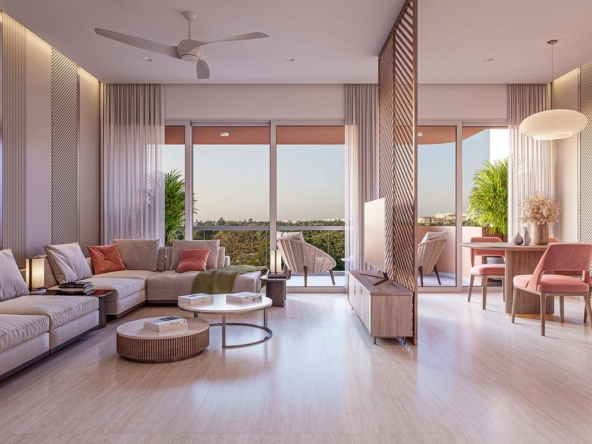Purchasing a new home is a major decision, and understanding the space you’re paying for is critical. Many purchasers are perplexed by the distinctions between carpet space, built-up area, and super area, which have a direct impact on the property price, home loan eligibility, and overall living experience. Knowing the difference allows you to make more educated decisions before booking a property, ensuring transparency and confidence throughout the buying process.
Carpet Area, Built-Up Area & Super Area
Every homebuyer should comprehend three terms: carpet area, built-up area, and super area. The carpet area, as defined by RERA, is the real useable space within the residence, eliminating walls, balconies, and common areas. It indicates the area where carpets and furniture can be placed, creating a true sense of livability.
The built-up area includes the carpet surface, the thickness of internal and external walls, and, in many cases, balconies or terraces. While developers may use this statistic to highlight a greater area, it is critical to distinguish it from the carpet area to determine the actual usable space within your home.
The super area, also known as the saleable area, is made up of the built-up area and a proportionate part of common areas, including lobbies, stairs, lifts, and other shared facilities. Developers frequently offer property prices based on the super area, which includes both private and shared spaces; however, this may not accurately reflect the actual living size of the flat.
Importance of Carpet, Built-Up & Super Area
Understanding these three categories is critical for effectively assessing expenses, maintaining openness under RERA, and planning home loans. The property price is frequently related to the super area, and understanding the carpet and built-up areas allows buyers to determine the true value they are receiving. RERA regulations require that the carpet area be fully stated in agreements, allowing buyers to compare properties fairly and avoid hidden expenses.
Furthermore, understanding these regions influences financial planning. Home loans and EMIs are computed using the property price, which typically includes the super area. A thorough understanding of carpet and built-up area enables purchasers to link their budget and finances with the real useable space they will receive, ensuring that investment and lifestyle expectations are met.
How to Calculate Carpet, Built-Up & Super Area
Carpet area is calculated by measuring the length and breadth of all usable rooms inside the residence, omitting walls, balconies, and communal areas. For unevenly shaped rooms, the area can be separated into simple geometric shapes, each computed separately, and then added to determine the overall usable area. Always check these measures against the RERA-approved plan for accuracy.
The built-up area calculation includes the carpet area, wall thickness, and balconies or terraces. A standard strategy is to increase the carpet size by 10-20% to accommodate for walls and other private spaces. Checking these figures to the builder’s information ensures clarity before booking the home.
The super area is calculated by combining the built-up space with a proportional share of common areas such as lobbies, lifts, stairs, and amenities. Developers typically assign a percentage of the total common area to each flat based on its size. Buyers can calculate the super area by adding the built-up area to the given share of common areas, which is frequently used as the basis for property pricing.
Understanding these figures provides buyers with complete clarity on what they are paying for, how much actual space they will receive, and how to successfully compare different projects. It also boosts confidence during negotiations and guarantees that investment decisions are well-informed.
Conclusion
Understanding carpet space, built-up area, and super area is critical before reserving a property because it directly influences investment decisions, finance, and daily living comfort. Ensuring clarity in these computations allows purchasers to avoid overpaying and manage budgets appropriately. By validating the RERA-approved carpet area, double-checking built-up and super areas, and understanding the cost per square foot, you can make a wise home investment that suits your lifestyle and financial objectives. A well-informed buyer can safely select a property that strikes the ideal blend of usable area, shared facilities, and total value.








